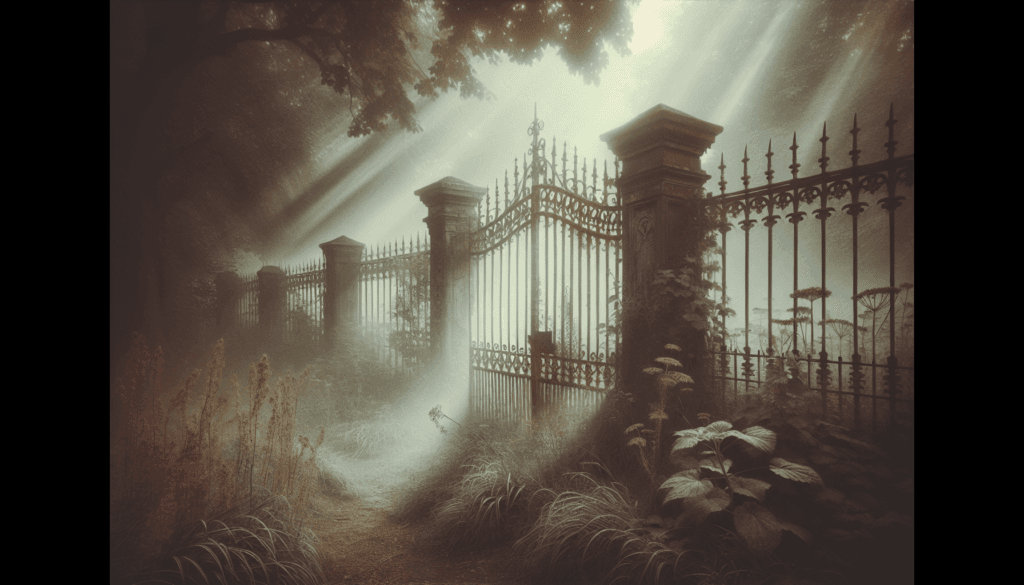What captivates individuals to gravitate toward the eerie and the macabre during their travels? This phenomenon, known as dark tourism, encompasses the exploration of sites associated with death, tragedy, and the supernatural. From battlefields and prisons to haunted locations and memorials, dark tourism offers a chance to engage with the more somber aspects of human history. This article unfolds the secrets behind what draws people to these haunting destinations, shedding light on their historical significance, visitor motivations, and the ethical dilemmas that surround the practice.

Table of Contents
The Allure of Dark Tourism
Dark tourism essentially refers to the act of visiting locations that are associated with death, suffering, or the darker chapters of human history. The modern traveler is increasingly intrigued by these sites, manifesting a significant part of contemporary travel culture. Such locations can evoke intense emotional responses, prompting reflections on mortality, human suffering, and the enduring impact of history.
Understanding Dark Tourism
Dark tourism has gained popularity due to various factors, including a societal obsession with crime, horror, and paranormal phenomena. Visitors are drawn to explore incidents of historical significance, such as the Holocaust, civil wars, and the legacies of notorious figures. The personal appeal of these sites often stems from a desire to connect with the past, to understand human behaviors in extreme circumstances, and to acknowledge those who suffered there.
Though it may seem morbid, dark tourism is not solely about spectacle. It frequently involves educational aspects and acts as a conduit for remembering tragedies and instigating awareness and empathy. By learning about the circumstances surrounding these places, individuals can appreciate the gravity of the histories they reflect.
Key Destinations in Dark Tourism
Numerous locations throughout the globe cater to the dark tourism phenomenon. Though this can encompass a range of experiences, several destinations stand out as particularly prominent.
Auschwitz-Birkenau, Poland
One of the most somber locations in dark tourism, Auschwitz-Birkenau serves as a Nazi concentration and extermination camp. Visitors often feel a profound sense of grief upon learning about the atrocities that occurred here during World War II. Each year, millions flock to this UNESCO World Heritage Site not only to pay their respects but also to engage with history and learn the importance of preventing such horrors from repeating in the future.
Chernobyl, Ukraine
The Chernobyl Exclusion Zone has garnered significant attention post-disaster, drawing visitors intrigued by the disaster’s haunting legacy and the consequences of nuclear power. The ghost town of Pripyat, abandoned since the 1986 nuclear accident, captivates with its eerie atmosphere and decaying structures, serving as a stark reminder of the impact of human error.
The Catacombs of Paris, France
Beneath the romantic streets of Paris lies a labyrinth of tunnels known as the Catacombs, which house the skeletal remains of over six million people. Visitors navigate this underground ossuary to witness the ultimate intersection of life and death, surrounded by murals and eerie displays of human bones. The Catacombs exemplify how urban locations can harness dark tourism to reflect on mortality.
Salem, Massachusetts, USA
Famous for its witch trials in the late 17th century, Salem has become a cultural epicenter for dark tourism, attracting individuals fascinated by tales of persecution, hysteria, and the supernatural. Numerous museums, tours, and reenactments allow visitors to engage with the site’s dark past while pondering the societal implications of fear and scapegoating.

Motivations Behind Dark Tourism
Understanding what propels individuals to engage in dark tourism requires an exploration of psychological and sociocultural factors.
Seeking Education and Understanding
People often visit dark tourism sites to educate themselves about tumultuous events in history. While convenience might encourage visits to mainstream tourist attractions, dark tourism sites offer a more radical shift in perspective. Visitors often express a desire to comprehend what led to historical atrocities and how such events resonate with contemporary issues. The lessons learned from visiting these sites can encourage societal reflection and change.
Curiosity and Thrill-Seeking
For some travelers, curiosity about the unknown and a thirst for thrill drives their interest in the macabre. Engaging in activities like ghost tours or exploring abandoned places can elicit excitement. This thrill-seeking behavior can serve as an escape from everyday life, creating a temporary thrill and exposing people to experiences beyond their comfort zones.
Reflection on Mortality
Dark tourism can prompt individuals to confront their own mortality and the inevitable realities of life. By visiting sites marked by tragedy or catastrophe, tourists gain a tangible connection to history and human experience, creating opportunities for introspection. This fascination with mortality underscores a universal human condition, prompting questions about the meaning of life and the legacy one leaves behind.
The Spiritual Aspect
For some, dark tourism transcends mere curiosity and inquiry, delving into the spiritual realm. Many are drawn to haunted locations to experience the supernatural or to seek a connection with the souls of the deceased. Whether seeking validation of paranormal beliefs or simply indulging their curiosity about the afterlife, individuals visit these sites with expectations of mystique and wonder.
Ethical Considerations in Dark Tourism
As dark tourism continues to grow, ethical considerations become increasingly paramount. The commercialization of tragedy raises questions regarding propriety, respect, and the intentions behind visits to such sites.
The Balance Between Respect and Profit
The proliferation of dark tourism has led to concerns regarding the commercialization of death. While tourism can bring financial support to communities and educate visitors, it also risks trivializing events of historical significance. Site managers and tour operators must ensure that experiences offered maintain a respectful approach, honoring history and those who suffered while providing engaging learning opportunities for visitors.
The Spectacle vs. Significance
Visitors’ motives differ, and some may approach dark tourism with a certain sensationalism, reducing complex histories to mere entertainment. Operators should strive to educate and inform while maintaining the gravity of historical narratives. This distinction must remain clear in order to truly appreciate the profound implications of visiting these locations.
Historical Accuracy
An important aspect of dark tourism rests on the obligation to convey accurate narratives. Misrepresentation or exaggeration can distort historical events and mislead visitors. Ensuring that educational components and interpretations are well-researched and factual fosters a deeper understanding of the events that transpired at these sites.

Dark Tourism and Emotional Processing
Countless studies suggest that encounters with tragic sites can serve as catalysts for emotional processing, enabling individuals to confront feelings of fear, grief, and sorrow. Engaging with difficult history can stimulate discussions and promote healing, potentially serving therapeutic functions for visitors.
Promoting Grief and Catharsis
Upon visiting dark tourism locations, individuals often experience catharsis, addressing their feelings about mortality, loss, and traumas, whether personal or societal. Such engagements allow tourists to reflect on broader themes of suffering and resilience. In some cases, understanding the past can alleviate individual distress.
Identifying Historical Patterns
Understanding tragic histories can create fresh perspectives on societal behaviors and human conflicts. The exploration of dark tourism sites can identify patterns that persist through time, fostering discussions regarding systemic issues such as human rights violations, war conflicts, and discrimination. This engaging process promotes awareness, encouraging individuals to think critically about current national and global issues.
The Future of Dark Tourism
As travel evolves, so too does the landscape of dark tourism. By merging education, historical reflection, and responsible practices, the future of dark tourism holds potential for positive societal impact.
Technological Advancements
Emerging technologies are transforming how visitors engage with dark tourism sites. Virtual Reality (VR) and Augmented Reality (AR) experiences offer immersive ways to explore historical events and places. Such tools allow individuals to engage with sites that might be otherwise inaccessible due to geographical or physical limitations.
Sustainable and Responsible Tourism Practices
As awareness grows regarding the impact of over-tourism, the development of responsible and sustainable tourism practices is gaining traction. Engaging local communities and creating ethical tourism frameworks can help mitigate potential negative consequences tied to dark tourism.
Evolving Tourist Demographics
The rising interest in dark tourism has drawn diversifying demographics and age groups. Educators and curriculum developers are beginning to incorporate field trips to these sites for students seeking historical context. This shift promises greater educational opportunities for deeper understanding of complex historical narratives.

Conclusion
Dark tourism is a fascinating yet multifaceted phenomenon that evokes curiosity and introspection. The intricate interplay of history, emotion, and morality beckons travelers to confront the more somber aspects of existence. While engaging with these haunting locations, individuals can reflect on their relationship with the past and their responsibilities toward the future. As dark tourism continues to develop, striking a balance between education, ethical considerations, and respectful engagement remains paramount for preserving the dignity of those who endured hardship and tragedy. Through thoughtful exploration, visitors may emerge not only as tourists but as bearers of knowledge, poised to share vital lessons that resonate through time.
Hot✈️ Cozy and Spacious Apartment for three Close to Catacombs, Paris, France
Heritage Tourism: Discovering Unique Destinations of the Past
